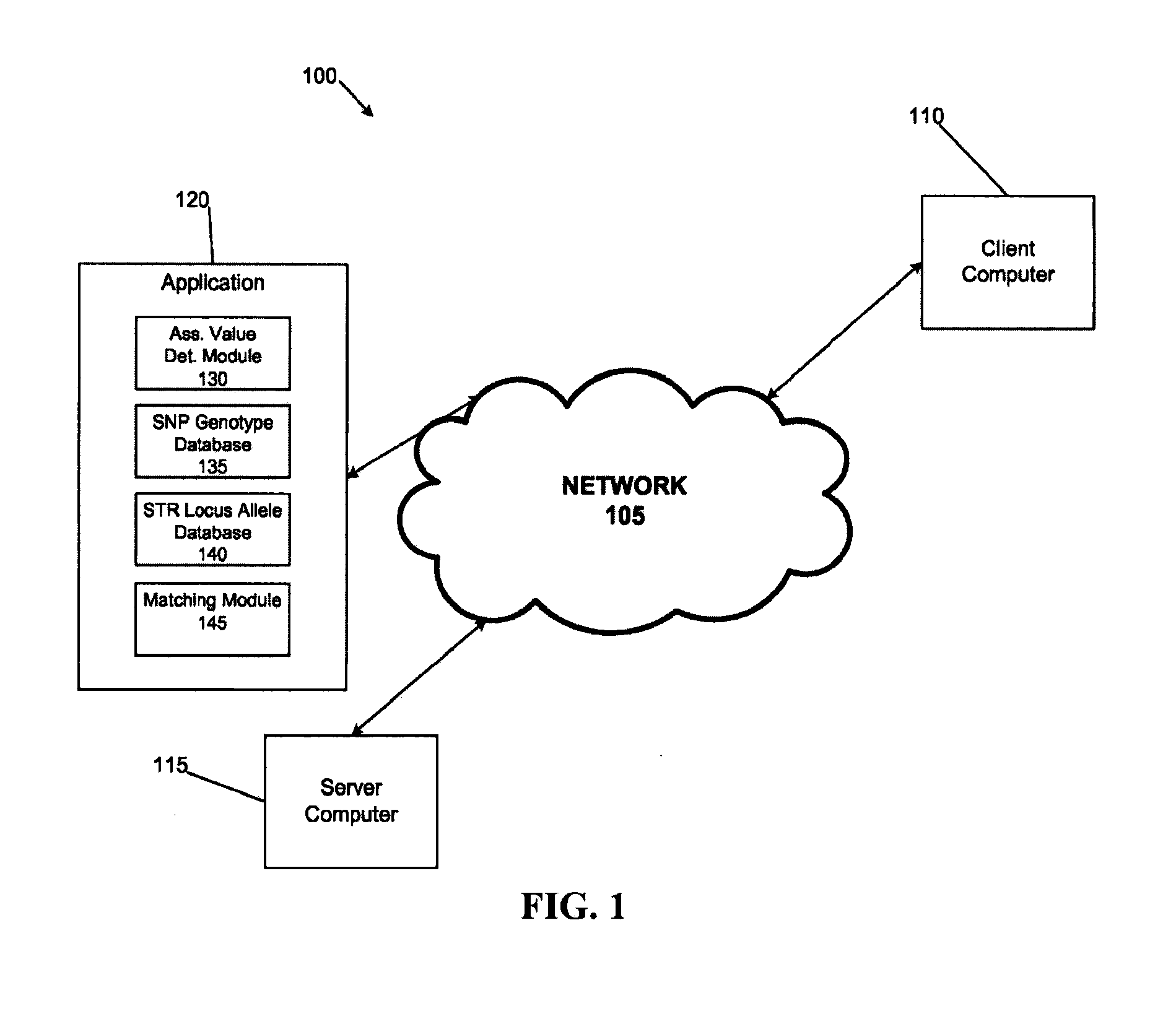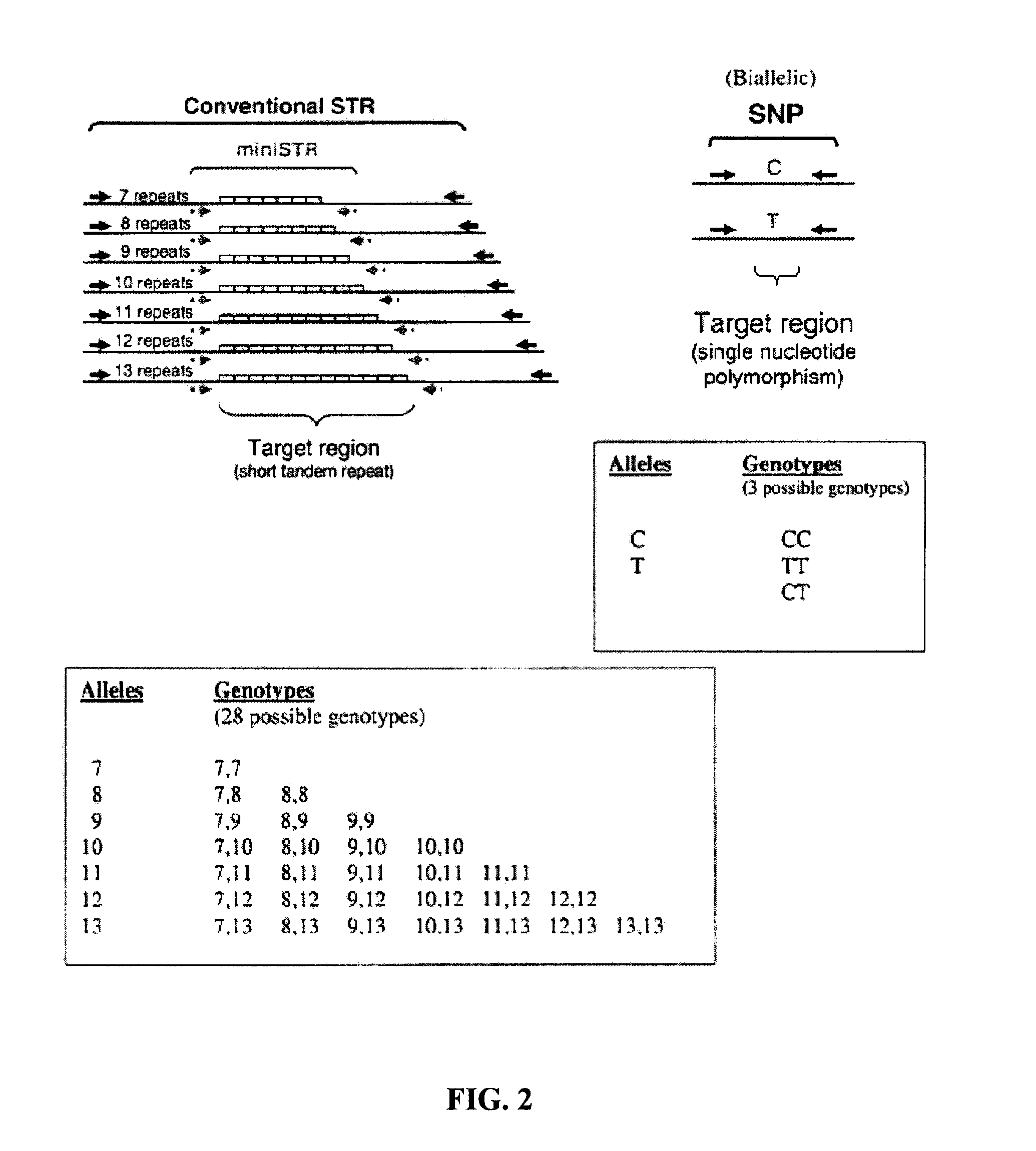System and method for inferring str allelic genotype from snps
a technology of allelic genotype and system, applied in the field of individual genotype, can solve the problems of difficult analysis, limited technology applicable to their analysis, and large database siz
- Summary
- Abstract
- Description
- Claims
- Application Information
AI Technical Summary
Problems solved by technology
Method used
Image
Examples
example 1
Cross Correlation Using Signal Processing Algorithms
[0068]The overall process of collecting a DNA sample and processing it produces a two dimensional electropherogram of rfu (relative fluorescent units) values or in the case of SNPs, spot intensities that are interpreted as allele calls. For the purposes of this invention, we will use the conventional forensic rfu terminology to mean either STR electropherogram peak intensity or SNP array spot intensity, Current forensic DNA analytic techniques use only one of these dimensions, allele call, while generally ignoring the rfu values. Limiting one's attention to the allele calls while ignoring rfu or intensity values negates the contribution of multiple identical alleles, i.e. dosage, but is in keeping with the validated interpretation guidelines of standard forensic practice. In order to utilize the other dimension, rfu values, it is necessary to have a model describing the relationship between the input, the amplified DNA, and the out...
example 2
Population Frequencies of the SNP Alleles with Regard to the STR Alleles
[0076]It is clear that the SNP mutations will span the entire evolutionary history of the STR mutations. That is, there will be SNPs that are ancient and therefore found in all STR alleles and newer SNP mutations that are in a subset of the STR allele groups. This is important in the differentiation of the SNPs that overlap allele groups and can be dealt with simply using the Hardy-Weinberg (HW) population probabilities. For example, in a SNP result that clearly defines TPOX allele 11 but overlaps the TPOX alleles 6 and 8, the question is which TPOX allele is it? 6 or 8? The answer is based on the population frequency of the possible combinations. The HW probability is calculated as 1 / 2(pi*pj) where i≠j. In the Caucasian population the 11,6 combination has a probability of 1 in 1041 (using published STR allele frequencies) while the 11,8 combination has a probability of 1 in 4. Since the 11,8 combination has the...
PUM
| Property | Measurement | Unit |
|---|---|---|
| Crystal polymorphism | aaaaa | aaaaa |
Abstract
Description
Claims
Application Information
 Login to View More
Login to View More - R&D
- Intellectual Property
- Life Sciences
- Materials
- Tech Scout
- Unparalleled Data Quality
- Higher Quality Content
- 60% Fewer Hallucinations
Browse by: Latest US Patents, China's latest patents, Technical Efficacy Thesaurus, Application Domain, Technology Topic, Popular Technical Reports.
© 2025 PatSnap. All rights reserved.Legal|Privacy policy|Modern Slavery Act Transparency Statement|Sitemap|About US| Contact US: help@patsnap.com



